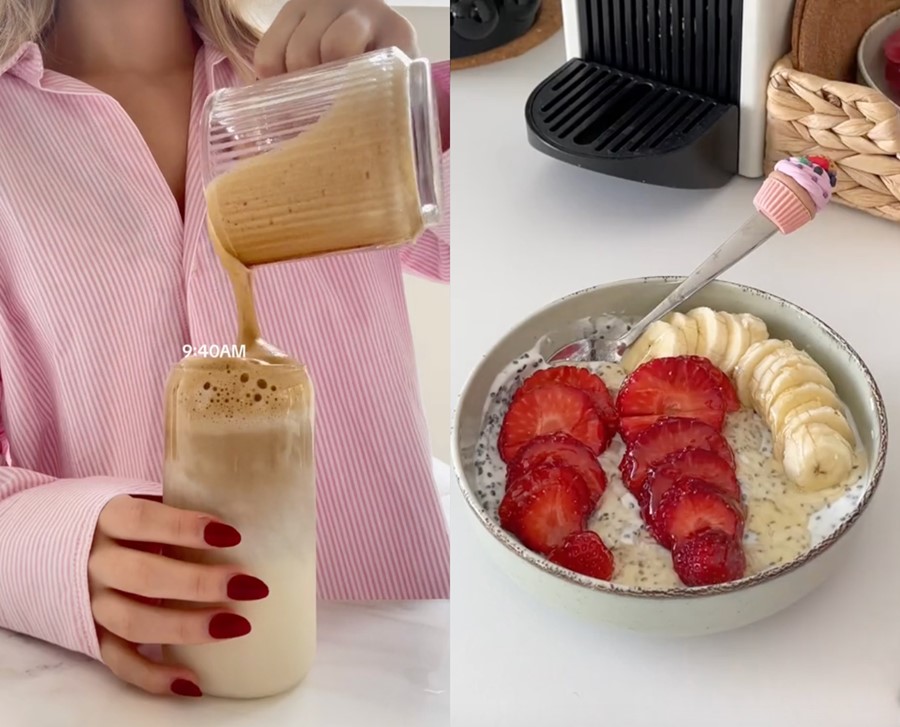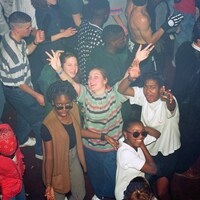Morning or evening ‘routine’ videos have always been a popular form of lifestyle content on the internet – and their enduring appeal reflects our desire for autonomy over our lives
Like ‘get ready with me’ or ‘what I eat in a day’ or ‘what’s in my bag’ videos, ‘routine’ videos have been a staple of internet lifestyle content since the dawn of social media itself. They’ve always been immensely popular – vlogger Bethany Mota’s autumn morning routine has racked up over 17 million views since it was posted in 2013 – and it’s a format with enduring appeal. At present, the TikTok hashtag #nightroutine has 9.3 billion views; #morningroutine has 27.3 billion. If anything, routine videos have only become more popular since the advent of TikTok and rise of short-form content, allowing lengthy, more ‘mundane’ videos to be condensed into 30-second-long clips.
As routine videos have been around for so long, the issue of whether they’re ‘good’ (practising gratitude, helping people with their mental health, etc) or ‘bad’ (unrealistic, putting pressure on people to make their lives look palatable at all times, etc) has been debated to death. But, really, responses to these videos will always reveal more about viewers rather than creators – so why do we keep coming back to the format? And what does their enduring popularity say about us?
The tone of routine videos has shifted in the last ten years, becoming increasingly specific. While ten years ago, viewers might have watched Bethany Mota make granola and go to Starbucks for a general sense of comfort or inspiration, today TikTok users are more likely to look to creators for guidance on exactly what products to use and exactly how to spend their time. One creator, Karley Fiebig, posts immensely popular ‘itinerary’ videos which regularly rack up thousands of views, where she offers viewers specific suggestions for how to spend their days, whether it’s a ‘lazy girl rotting Sunday’ or a ‘city girl fall Saturday’.
Another recent video, posted by writer and creator Hannah Connolly, offers an itinerary for how to spend a winter day when you’re working from home. She suggests getting up one-and-a-half hours before you’re due to start work and going on a walk before opening your laptop. “Get dressed in comfy leggings and big socks,” she suggests. “Make your morning drink [...] it doesn’t have to be a black coffee: it could be a cinnamon-honey latte, or a mint tea, or even a coke. All that matters is that you enjoy it.” The video has been liked over 38,000 times and has over 338,000 views.
@thenudelip FRIDAY NIGHT ITINERARY ✌🏽 #itinerary #FRIDAYNIGHTITINERARY #weekenditinerary #friday #greenscreen ♬ original sound - The Nude Lip | Karley Fiebig
On the surface, it may seem surprising that these videos are so popular when so little happens in them, but this is a large part of the appeal. “I think they’re probably popular because they are slightly different in tone and style to the rest of TikTok,” Connolly tells Dazed, suggesting that viewers are drawn to the relative tranquillity of her videos as most of the other content on TikTok is usually “fast and slightly frenzied”. Connolly adds that she suspects most of her viewers are Gen Z and millennials, who are likely yearning for content that promotes a slower pace of life. “There’s something about how fast life is in your twenties and how much information you’re bombarded with,” she suggests, which could make viewers seek out comforting content like hers.
These videos also tie in with the growing preference for content that appears more ‘authentic’ and less curated. “Content creators are often driven to jump on to trends, and what we’ve seen in recent years – particularly in Western societies – is a broader social rejection of heavily curated and crafted online content, like obviously edited selfies or full-body pictures, or depictions of lavish lifestyles,” explains Dr Ysabel Gerrard, senior lecturer in digital media and society at the University of Sheffield. But, she adds, this trend towards more ‘authentic’ content hasn’t appeared in a vacuum. “A mixture of external forces like the pandemic – and us leading slower, more local lifestyles amidst ‘lockdowns’ – the cost of living crisis, and the demise of ‘girlboss’ and ‘hustle’ cultures have left people craving what seem to be more authentic, mediated depictions of everyday life. This is exactly where ‘routine’ videos come into play.”
The trend also is a clear example of Gen Z’s penchant for ‘romanticising your life’. “The rise of the hyper-specific routine videos where content creators share an almost minute-by-minute breakdown of how they spend their day is the natural extension of an older trend, compounded by a social desire, particularly in the UK, to spend our days without spending too much money and therefore romanticising the mundane,” Dr Gerrard says. This chimes with Connolly. “I think some of the messaging on my particular videos are about finding joy or contentment in the everyday and small moments,” she says. “It’s about repositioning the mundane as something to be grateful for – the quotidian as a privilege, as opposed to a hardship.”
@vanessafaga asmr productive morning routine with timestamps🎀✨🎧 #fyp #morningroutine #asmr #asmrsounds #productivity #productivemorning #itgirl #selfcaretiktok #dailyvlog #timestampedroutine ♬ IT GIRL - Sped up Version - Aliyah's Interlude
This makes sense, given that for young people in 2023 it is a privilege to be able to do something as mundane as buy an oat flat white: research published by the Resolution Foundation in 2019 found that 18- to 29-year-olds have less disposable income than those who were the same age in 2001. Depressingly, it’s even become a privilege to be able to have a satisfying nine-to-five job and afford your rent: more than one third of UK employees are unhappy in their jobs and rent is now unaffordable for a third of tenants. Relatedly, due to wages struggling to keep pace with the rising cost of living, traditional milestones such as buying a house or starting a family are now out of reach for many young people; and with so much out of our control, it tracks that we’re obsessing over the small things we can control and, well, romanticising our lives.
These videos are ultimately a byproduct of the pervasive sense of uncertainty that so many young people are feeling right now. Some of them are sheer fantasy – has a single one of this video’s 925,000 viewers really got out of bed to drink a glass of lemon water at 7:15am on the dot? – but the point is hardly whether they’re realistic or achievable or not. Instead, their popularity reveals a lot about our anxieties about time and our desire to impose order on chaos, in an era when so much seems out of our control.




